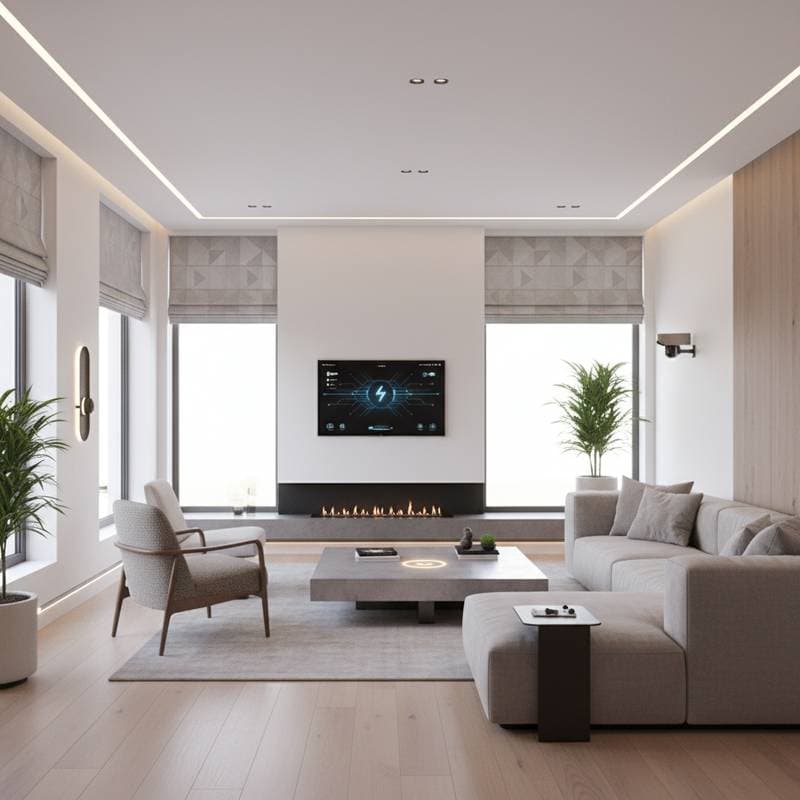Smart Home Upgrades That Increase Property Value by 10 Percent
Entering a residence where lights dim automatically upon entry, temperatures adjust to personal preferences, and window coverings respond to shifting sunlight evokes a sense of seamless modernity. This integration of technology enhances daily living while signaling substantial long-term value to prospective buyers. In 2025, smart home features have evolved from optional enhancements to essential elements that influence market appeal, energy savings, and overall desirability.
Real estate data indicates these systems can elevate property prices by up to 10 percent in urban and suburban markets. Buyers increasingly seek homes equipped with automation that promotes efficiency and security. The following sections detail proven upgrades, their implementation, and the financial benefits they provide.
Essential Benefits of Smart Home Integration
- Thermostats and lighting controls yield rapid energy savings and demonstrate proactive home management.
- Comprehensive security setups reduce perceived risks and accelerate sales processes.
- Centralized hubs ensure device harmony, enhancing user experience without complexity.
- Eco-friendly features draw environmentally aware purchasers focused on sustainability.
These elements combine to create homes that stand out in listings, offering both immediate utility and future-proofing.
Implementing Smart Thermostats for Energy Savings
Smart thermostats represent a foundational upgrade with quantifiable returns. Devices from Ecobee or Nest range in price from 150 to 300 dollars, with most installations requiring less than one hour using existing wiring. Annual reductions in heating and cooling costs typically amount to 10 to 15 percent through adaptive learning algorithms.
These units analyze occupancy patterns, local weather forecasts, and user schedules to optimize settings. Remote access via mobile applications allows adjustments from anywhere, ensuring consistent comfort. During property showings, agents highlight this feature to underscore the home's efficiency, often leading buyers to overlook the need for personal installations.
To maximize impact, pair thermostats with zoning capabilities for multi-room control. This setup not only lowers utility bills but also appeals to families prioritizing individualized comfort zones.
Enhancing Security Through Automated Access Systems
Security features exert a profound influence on buyer confidence. Video doorbells, indoor cameras, and electronic locks from brands like Ring or August provide real-time oversight and controlled entry. A complete package, including sensors and a central panel, costs 600 to 1,200 dollars, with optional monitoring services adding 10 to 20 dollars monthly.
Remote viewing capabilities enable homeowners to check on their property via smartphone, while automated locks permit time-limited access for visitors or technicians. Instant notifications for detected activity deter potential threats and offer peace of mind. Properties with these systems often sell faster, as buyers view them as move-in ready with built-in protection.
Installation begins with assessing entry points and Wi-Fi strength. Professional setup ensures compliance with local regulations, particularly for door hardware integration.
Centralizing Control with Voice-Activated Hubs
Effective smart homes rely on unified platforms to avoid disjointed operations. Hubs such as Amazon Echo, Google Nest Hub, or Apple HomePod serve as command centers, linking devices across lighting, audio, and appliances for under 300 dollars. Voice commands streamline routines, from dimming lights to initiating security sweeps.
Compatibility forms the cornerstone of success; select an ecosystem that aligns with existing gadgets to prevent integration issues. During home tours, a demonstration of synchronized actions—like voice-activated shade adjustments and ambient lighting—captivates visitors and highlights the home's innovative edge.
Plan for expansion by mapping out device placements and reinforcing Wi-Fi signals in remote areas. This preparation avoids common pitfalls like signal dropouts, ensuring reliable performance over time.
Elevating Bathrooms with Intelligent Fixtures
Bathrooms increasingly serve as personal retreats, where smart enhancements add layers of luxury and efficiency. Illuminated mirrors with defogging functions, sensor-operated faucets, and underfloor heating systems transform routine spaces into refined escapes. Mirrors cost 300 to 1,200 dollars, while faucets begin at 150 dollars, delivering quick aesthetic and functional upgrades.
Motion detection in faucets conserves water by activating only when needed, aligning with sustainability goals. Heated elements maintain warmth without excessive energy use, appealing to buyers seeking indulgent yet practical designs. These additions subtly shift perceptions, making the home feel premium from the outset.
Incorporate water-monitoring sensors to track usage and prevent leaks, further boosting appeal among resource-conscious demographics.
Prioritizing Safe and Compliant Installations
Many smart devices support self-installation, but electrical integrations demand expertise. Consult local building codes for any modifications involving outlets or circuits. Begin with wireless options to test functionality before committing to permanent fixtures.
Engage certified professionals for complex tasks, such as embedding hubs into walls or wiring automated blinds. This step safeguards against hazards and preserves warranty coverage.
Network security merits equal attention: implement robust passwords, enable multi-factor authentication, and apply firmware updates promptly. These measures protect personal information and assure buyers of the system's dependability.
Timing Upgrades for Optimal Performance
Align installations with seasonal demands to realize full benefits. Deploy thermostats and ventilation systems prior to summer heat or winter chills for immediate efficiency gains. Security enhancements prove invaluable before holiday travel, when remote access shines.
Routine maintenance sustains performance: swap batteries quarterly, wipe camera optics, and verify connections post-storms. Built-in notifications simplify this process, often requiring just a few minutes monthly.
Regular software reviews keep components aligned with platform advancements, extending the lifespan of your investment.
Personalizing and Sustaining Smart Features
Tailor selections to lifestyle needs, opting for interfaces that blend into interiors—such as recessed panels or sleek mounts. This approach maintains architectural harmony while delivering technological advantages.
Ongoing evaluation ensures adaptations to changing habits, like adding health-monitoring sensors for aging-in-place scenarios. By focusing on user-centric design, these upgrades not only preserve value but also enrich daily experiences, positioning the home as a enduring asset.
